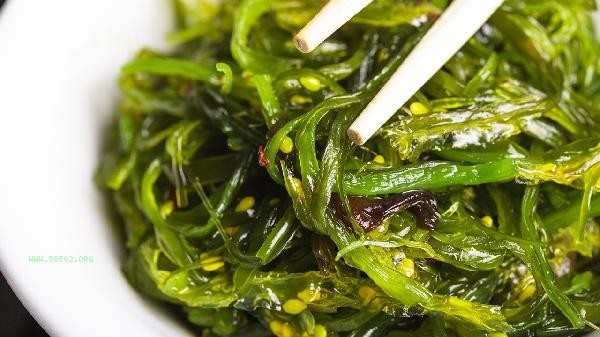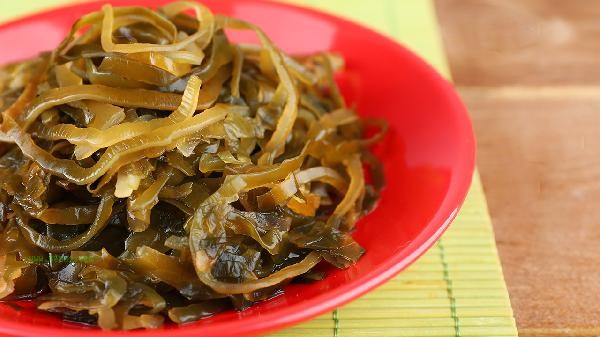The foam on the surface of blistered kelp is mainly related to the dissolution of natural ingredients such as alginic acid and mannitol in kelp, which is a normal phenomenon. The foam produced during kelp foaming may be caused by such factors as the residual marine microbial metabolites on the kelp surface, the release of algin in water, the dissolution of food grade coagulants added during processing, trace impurities in transportation and storage, and excessive water temperature for foaming.

1. Alginate precipitation
Seaweed is rich in alginate, which exists in the form of calcium salts in a dry state and gradually dissolves in water to form a viscous alginate solution. This polymer polysaccharide has strong surface activity and is easy to produce stable foam under agitation or water flow impact. The cell wall of fresh kelp is broken after drying, and the algin is more easily dissolved when foaming, forming a gelatinous substance similar to egg white to wrap the air and form a foam layer.
2. Microbial Metabolites
Kelp may adhere to microorganisms such as pseudomonas in the ocean during harvesting and drying, and the extracellular polysaccharides and protein mixture produced by its metabolism have foaming properties. Such bioactive substances lose their activity in the drying process, but some soluble components will be released after encountering water, especially when the foaming time exceeds 4 hours or the water temperature is high, the foam phenomenon is more obvious.
3. Processing aid residues
Some industrially produced dried kelp may use edible grade sodium carbonate or calcium chloride as setting agents, which may react with minerals in water to generate microbubbles. The residual amount of food additives allowed by the national standard is very small, but if you scrub or use hard water when foaming, it will aggravate the production of foam. Such foam usually has a slight alkaline smell and dissipates quickly.

4. Storage and transportation pollution
Kelp may adsorb dust or packaging material precipitates in the storage process, and the lipid components in these trace impurities have the effect of reducing surface tension. In particular, the bulk kelp packed in plastic woven bags may accumulate micro plastic particles on the surface after long-term storage, forming a persistent foam together with the polysaccharide of kelp itself.
5. Improper soaking operation
Using hot water above 60 ℃ for rapid soaking can accelerate the rupture of surface cells in kelp, causing a large amount of amino acids and nucleotides in the cells to seep out. These nitrogen-containing compounds combine with polysaccharides to produce a stable structure similar to beer foam. At the same time, high temperature will promote the degradation of alginic acid to generate small molecular sugars, further increasing the foaming property of the solution.

When handling kelp with foam, it is recommended to flush it with flowing cold water for 30 seconds first, then soak it in clean water for 2 hours, and most foam can be removed by changing water for 1-2 times halfway. In case of urgent need, it can be soaked in 1% light salt water for 20 minutes. Salt ions can destroy the stability of colloid and make foam dissipate quickly. Pay attention to the characteristics of foam. Normal kelp foam should be milky white without irritating smell. If there is a colored oil film or a putrid smell, it indicates that the pollution risk should be discarded. Dry seaweed should be stored in a cool and ventilated place for daily use, avoiding mixing with volatile odors. After opening, it is recommended to store it in a sealed container and consume it as soon as possible.








Comments (0)
Leave a Comment
No comments yet
Be the first to share your thoughts!